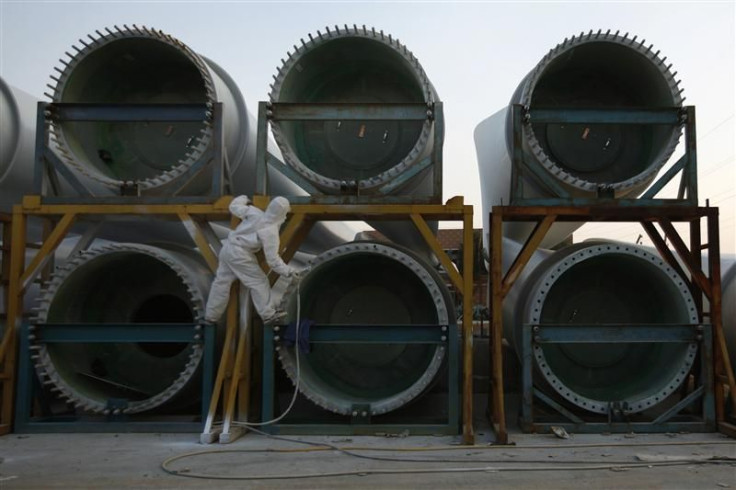Asian Manufacturing Firms Up, China PMI Hits 11-Month High

(Reuters) - Asia's manufacturers stepped up the pace in March to fill an influx of new orders as Europe's debt crisis subsided and U.S. growth picked up, dispelling some of the gloom that had shrouded the global economy.
While still far from robust, factory activity strengthened in China, South Korea and Taiwan, three of the region's leading exporters. Both export and domestic demand firmed.
But the figures, released on Sunday and Monday, still suggested economic growth slowed in the first quarter of 2012. China appeared to be headed for its weakest quarter since early 2009, at the depths of the global financial crisis.
Data due later on Monday is expected to show Europe's factories stayed quiet as the region slides into a recession, while U.S. figures may reflect a modest uptick.
China's official Purchasing Managers' Index (PMI) hit an 11-month high with a stronger-than-expected reading of 53.1 for March.
But a separate private survey by HSBC, which focuses more on smaller factories than the large state-owned enterprises captured in the official data, painted a gloomier picture. The index stayed below the 50 mark separating growth from contraction, coming in at 48.3 in March.
The upside surprise in China's manufacturing PMI is welcome, and should help quell excessive fears of a hard landing in China, said Vishnu Varathan, an economist with Mizuho in Singapore.
But equally, we should not be lulled into thinking that China has turned a corner either. Global conditions continue to be highly uncertain notwithstanding the stabilization in Europe and 'green shoots' in the U.S.
DEMAND STILL SLUGGISH
HSBC's Purchasing Managers' Index (PMI) for South Korea edged up to a one-year high of about 52 in March from February's 50.7.
But that wasn't enough to get economists cheering.
While the pickup was supported by an expansion in new export orders, its growth was only marginal as economic conditions remain subdued in key markets.
Don't get carried away, said Ronald Man, an economist with HSBC in Hong Kong who follows South Korea. Further upward momentum requires expectations of higher new orders to materialize.
Data released on Sunday showed South Korean exports fell 1.4 percent in March from a year ago, missing the consensus forecast for a small gain and indicating exports will remain weak at least through the second quarter.
In Taiwan, the PMI figures marked the second straight month of improving business conditions and the pace of expansion was the fastest since April 2011.
Increased demand, both domestically and from abroad, supported factory activity in March.
THE ODD ONE OUT
In contrast to the rest of the region, factory activity in India faltered in March. Expansion in Asia's third-largest economy slowed for a third straight month as growth in new orders eased and the cost for raw materials showed no signs of falling.
While the index remained above 50, indicating expansion, it slipped to 54.7 in March from 56.6 in February.
Adding to India's worries, while growth is expected slow, the latest figures indicate a pickup in inflation which would make matters dicey for the Reserve Bank of India (RBI), which has often been criticized for being behind the curve.
India's headline inflation, as measured by the wholesale price index, picked up in February for the first time in five months, dimming chances for a reversal in the hawkish monetary stance of RBI.
Asia's economic fate remains closely tied to that of its export customers in the United States and Europe. Demand there still looks sluggish, even though the euro zone debt crisis poses less of an immediate threat to global economic stability and U.S. data has shown a bit more bounce.
Euro zone PMI data to be released later on Monday will likely show the manufacturing sector contracted, in line with a flash estimate released in late March. That has intensified fears that the region may be slipping into a deeper recession.
The euro zone manufacturing PMI is expected at 47.7, a sign business activity is wilting.
In the United States, the Institute of Supply Management manufacturing PMI is expected to rebound slightly to 53.0 in March from February's 52.4.
(Editing by Emily Kaiser)
© Copyright Thomson Reuters {{Year}}. All rights reserved.





















